Crack of dawn, silenced shot, masked assassin gone in a flash.
Presumably, every film director on Earth is kicking a wall because they didn’t come up with the idea for that shot first.
Associated Press Reports the Timeline:
Dec. 4
About 5:30 a.m. — The suspected shooter leaves the hostel well before dawn.
5:41 a.m. — He appears on video at 54th Street and Sixth Avenue walking back and forth in the area of the Hilton hotel where United Healthcare’s parent company, UnitedHealth Group, is holding its annual investor conference.
Police deduce that he rode a bicycle to the Hilton because it took him such a short time to get there. “Could he have stolen the bike? These are things we’re still looking into,” NYPD Chief of Detectives Joseph Kenny said.
At some point, he went to a nearby Starbucks and purchased a bottle of water and at least one energy bar before returning to the hotel.
6:44 a.m. — He shoots Thompson as the executive arrives alone, on foot, having walked from a hotel across the street. The man flees.
6:48 a.m. — The man enters Central Park by bicycle at the 60th Street and Center Drive entrance. It’s in the park and away from security cameras that police believe he discards a gray backpack.
6:56 a.m. — He leaves the park at West 77th Street and Central Park West, still on the bicycle.
6:58 a.m. — He passes another camera on 85th Street and Columbus Avenue, still on the bicycle.
7 a.m. — He’s at 86th Street, no longer with the bicycle.
7:04 a.m. — He enters a taxi northbound at 86th Street and Amsterdam Avenue.
7:30 a.m. — He’s near the George Washington Bridge and the bus terminal there. It offers commuter service to New Jersey and Greyhound routes to Philadelphia, Boston and Washington.
After the attack, investigators find the words “delay,” “deny” and “depose,” written in permanent marker on ammunition at the scene. The words mimic a phrase used by insurance industry critics.
Left, right, centrist– everyone is laughing at the schadenfreude of it all.
A man who was directly responsible for causing the physical pain, suffering, and even deaths of their loved ones, a man who made money off of this harm, gets shot in broad daylight, and the killer gets away.
Memes of “ooh, he shouldn’t have had a preexisting condition that made him get shot,” and “my thoughts and prayers are out of network,” stretch from the depths of Stan Twitter all the way to your conservative great-aunt’s Facebook page.
It was a pressure valve being released. It felt to many everyday people like justice was being served for the first time in a long time. Most people echoed the sentiment that they hoped he got away.
And then, the security camera footage is released to the public.
Anyone who might have been uninterested up to this point now has their attention aroused.
Because oh my God.
Dec. 6
Kenny and Police Commissioner Jessica Tisch reveal that investigators believe the gunman left New York City on a bus. Investigators say he entered the George Washington Bridge Bus Station but have not found video of him leaving or getting on a bus.
“It could possibly be a disgruntled employee, or a disgruntled client,” Kenny says of a possible motive in a briefing.
Police find what they say is the man’s backpack. Its contents are not disclosed.
There’s mention of the backpack being found loaded with Monopoly money. People start to view the nameless assassin like the Joker or the Riddler. It’s not just an enraged crime of passion.
Dec. 7
Police continue to search Central Park; scuba divers are seen scouring a pond. The NYPD releases additional photos showing the suspected shooter next to and in the back seat of a taxi. In both images he is seen wearing a blue, medical-style face mask.
Despite recovering a fingerprint from the Starbucks purchase and sending items for DNA testing, police have yet to publicly identify the suspect.
Everyone reacted exactly how you’d think.
Dec. 8
Scuba divers are again seen at a Central Park pond. Police decline to comment on the investigation.
Dec. 9
9:14 a.m. — Police in Altoona, Pennsylvania, are dispatched to a McDonald’s to respond to reports of a male matching the description of the suspect in the shooting.
Some people quirked their eyebrows at the comical irony of the Monopoly money in the backpack and the subsequent arrest in a McDonald’s, who famously partnered with Monopoly for years.
People begin to speculate on who it could be, what the hell he was doing in Altoona, PA, or if this is even the killer at all.
There are a thousand and one things that are odd about this case, and social media allows a space for anyone with internet access to become a detective.
But after all of this, we finally have a name:
Luigi Nicholas Mangione, 26, is taken into custody on unrelated charges, according to the Altoona Police Department.
Alright here it comes. The NYPD surveillance footage.
Mangione had a gun believed to be the one used in last Wednesday’s shooting, as well as writings suggesting “ill will toward corporate America,” Kenny said on Monday. He also had clothing and a mask similar to those worn by the shooter and a fraudulent New Jersey ID matching the one used to check into the Manhattan hostel, Kenny said.
-Michael R. Sisak, Cedar Attanasio; Associated Press
“Babe wake up the alleged CEO shooter is low key hot.”
Search “luigi mangione hot” on Twitter (I won’t call it X) and you’ll find no shortage of Thirst Comments. These vary on a scale from a restrained-yet-still-delightfully-surprised “oh wow…” to some variation of this:
usually responded to in kind with “so true bestie” on a post from PopCrave* or PopBase (the latter, with this one.) [PopCrave and PopBase are each their own incredibly intricate news and media ecosystems, but that is a topic for another day.]
[And some of you are saying “Alexis, there are way more insane thirst posts about him! I tagged you in them myself!” Don’t you worry, I’ll report back on all the most insane, unsettling, disturbing horny posts I found once I finish cataloging them. No this isn’t a joke.]
Luigi even spawned his own update account, LuigiCrave, and up until this case, I never realized just how deep the divide is between those who are Chronically Online and those who are not.
If you read the words “Luigi Crave” and immediately understood the context (a play on the aforementioned PopCrave and its lore), you’re qualified to teach a course on Social Media History and Culture to those in your community (which will be a subject of study 100 years from now, mark my words.)
If you didn’t understand, you’re likely over the age of 35, or simply just employed, and at this point, you may just feel like skipping over whatever deranged bullshit Stan Twitter and TikTok has to say.
And I can’t say I fault you!
I was raised in the Wild West Era of The Internet and I came out on the other side. I know the ins and outs of The Freak Shit Online that most normal adults in their late 20s have waved off as just “stuff the weird kids did in middle school.”
As a retired Scoliosis Brace and Rolling Backpack Kid who was addicted to Tumblr and Wattpad in a way that should’ve foreshadowed future substance abuse issues, I have a particular understanding of and affinity for Weird Online Shit.
The depths of fandom and stan culture (yes, there are nuances between the two) began to shape my intellectual and creative interests in ways I didn’t understand at the time.
Shitposters, conspiracy theorists (the non-racist ones), and little weirdos with no filter all call to me in ways that I can only imagine cuisine called to the late, great Anthony Bourdain (whose photo I carry with me in my wallet) and freaky, unsettling things call to John Waters (who I definitely wrote fanfiction with in a past life).
Growing up on the internet gives you unfettered access to pour out your every thought, feeling, dream, lie, threat, fear, passion, and any other emotion in between to an audience of strangers.
Sure, maybe some responses will be hateful and vicious and evil, but maybe you’ll get a good one.
Maybe you’ll get a comment that changes everyone’s mind, one that changes your own mind, one that makes you look amazing. Then it’ll all work out.
But you’ve got to keep checking, you’ve got to keep an eye on the awful ones, you’ve got to combat them and keep them in line so other people don’t see it, even though you might Streisand yourself. Ah, who cares, you’re getting attention now. You got a really nice comment, aw, that’s great, but that person who left the hate comment got 7 likes and your comment only got 5 likes.
Everyone probably hates you now, sorry. Just keep checking.
It’s a dopamine slot machine that at first, was only on The Family Computer, but now it’s in your pocket. It’s everywhere.
You have your read receipts turned on for DMs, so everyone knows you’re ignoring them. You said you’re at home but they know that’s not true because you posted on Instagram 35 minutes ago at the restaurant across town even though you already left by the time you posted that but they don’t know that.
Well, actually they have Find My Friends turned on so you can’t hide. If you turn it off, they’ll see, they’ll think you’re mad at them. And you won’t see them till Monday morning, so you just have to watch their reposts to see what they’re feeling, to see if they’re mad at you, just in case, just in case they repost something about a bad friend, because it could be about you. Do you confront them? Do you send a DM? You open the messages but you see they sent you a message that you forgot to reply to. You opened it by accident, and remembered you have read receipts turned on for DMs.
The cycle begins again.
It quite literally rewired my brain.
But lately, I’ve been working on understanding it. I realized just how deep social media lore goes, and that if I tried to explain the nuances of just the phrase “Luigi Crave” alone to my mom it might take me the better part of 6 months.
There’s a massive divide right now between those with internet literacy and those without it, and right now, every online community is meeting at this crossroads: West 54th Street, outside the New York Hilton Midtown Hotel.
We’re all transported here through social media links watching history happen in an instant, all while a genocide continues being broadcast across the world, funded by the American taxpayer watching children being bombed on TikTok Live.
It sounds absurd because it is. It is absurdism, it is senseless, it is cruel. Every day, school shootings happen in America, children are killed, and nothing is done to stop it. Ever.
If the amount of effort put into this manhunt for the killer of a healthcare CEO had been put toward ending school shootings, they would have stopped long ago. It is being shown time and time again that to those in power, wealth is more important than human life.
The U.S. Government demanding TikTok be sold to an American company or face being banned as a whole is a direct response to the free flow of information between everyday people, not “data privacy,” because if that were the case, the American Government would be in some hot water with the way they’ve allowed our Social Security information to be compromised.
While some still write off the entire concept of social media as frivolous and unimportant, those of us who understand historical preservation on a deeper level know the gravity of having a record of the everyday person’s thoughts and recollections through a highly tumultuous time in history.
Imagine if the assassination of Archduke Franz Ferdinand was filmed and posted on TikTok. How many first-hand primary sources would we have had from the leadup to World War I? How could that have changed the world?
I imagine at some point, we’ll have to find out.
I will leave it on this note: UnitedHealthCare CEO Brian Thompson deployed an AI system to automatically deny insurance benefits for sick people.
A comic book villain storyline. One so ridiculous they’d laugh the writer out the door halfway through their pitch.
Every single person I know has had trouble with their health insurance provider as long as they can remember. There is quite literally no other way this industry runs other than on the exploitation of people in need.
You don’t realize you’re a person in need until you are, and no one helps you. You don’t realize your life is disposable in the pursuit of money, until it is. You don’t realize it can happen to anyone until it happens to you.
And then you realize you’re more like the homeless person on the street than you are the CEO who makes billions off both of your suffering.
That’s a sentiment that has spread like wildfire through every social media platform since the shooting.
And there are no “Chinese or Russian spies” sowing distrust in TikTok comments. There are people like you and I telling others the reason one of our family members died is because they couldn’t afford their lifesaving medication.
The richest country in the world lets its own citizens (and not to mention its veterans) die in the streets, sick and opiate addicted, and its wealthiest corporation executives count on that system to keep the money coming their way.
American industry is built on the backs of slave labor, indigenous genocide, and the abuse of the working class of all races and ethnicities. The cycle of exploitation has been destroying lives since its inception, and the shooting of Brian Thompson, for better or worse, has had a hand in disrupting the pattern.
Where it goes from here, I can’t say. But I do know the power of social media as a tool for change, and I wouldn’t count out its importance in this case—primary sources are primary sources.
Stay tuned.
UPDATE: Friday, December 20, 2024
Oh my god…




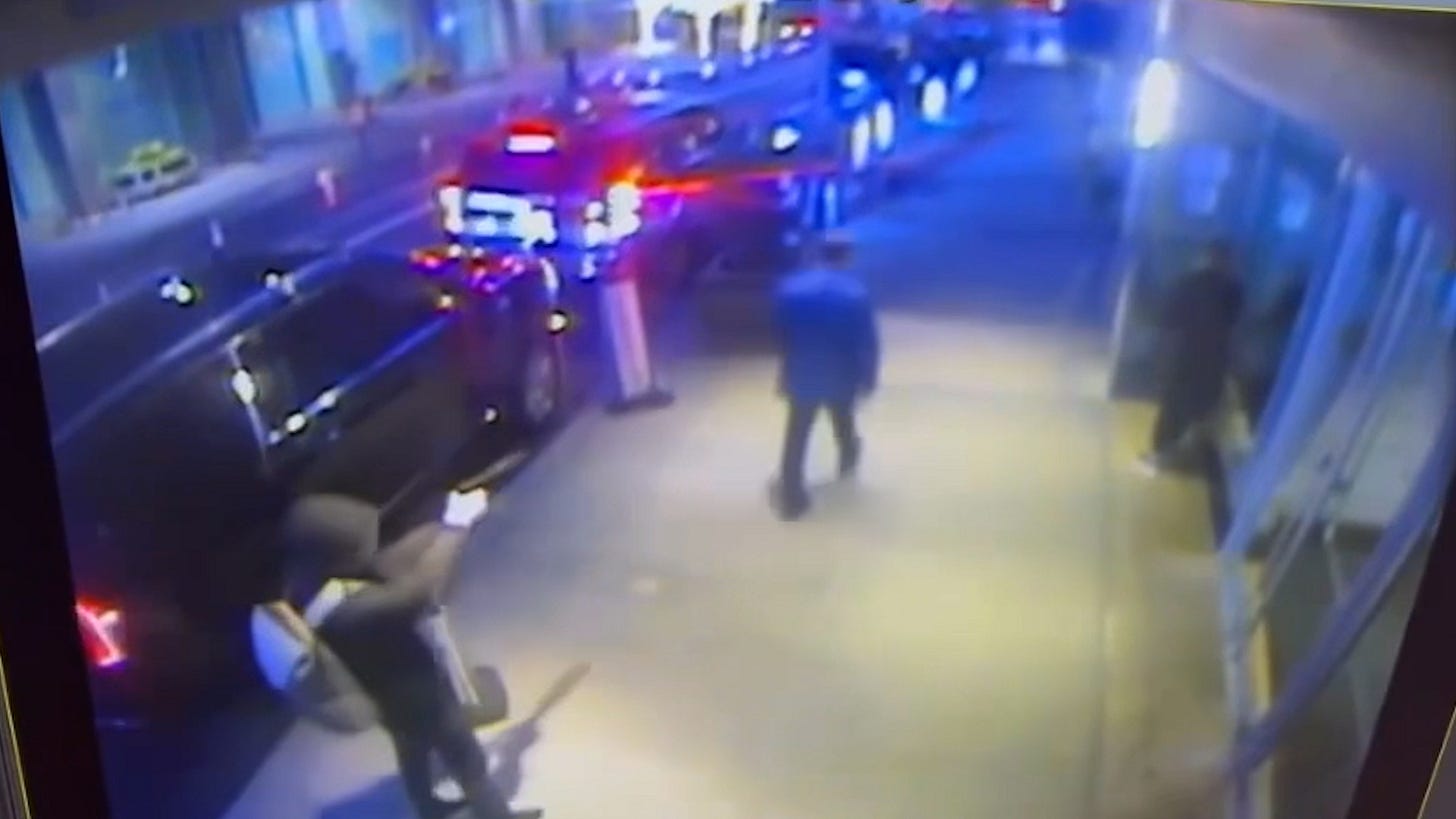




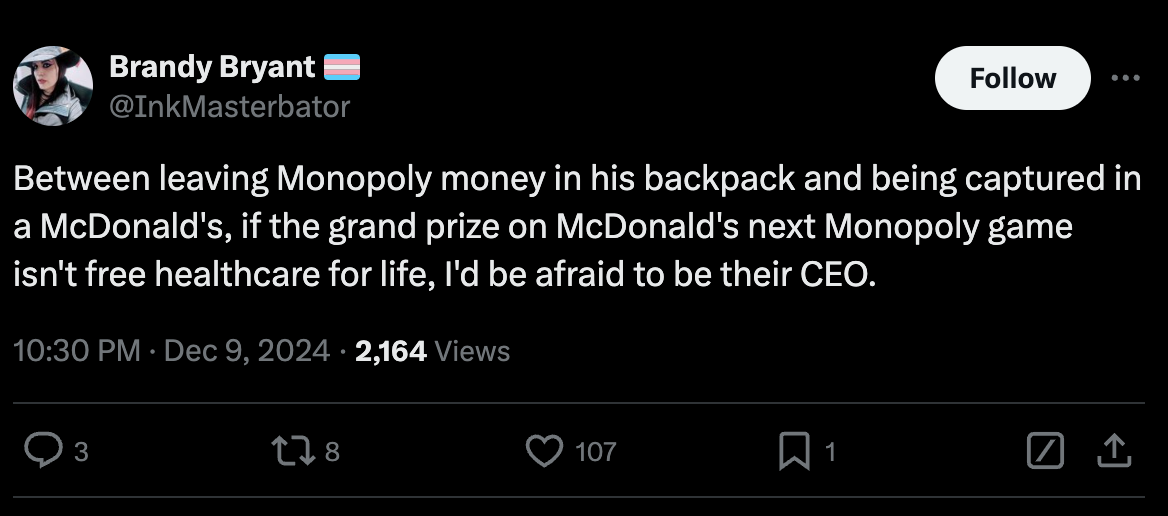

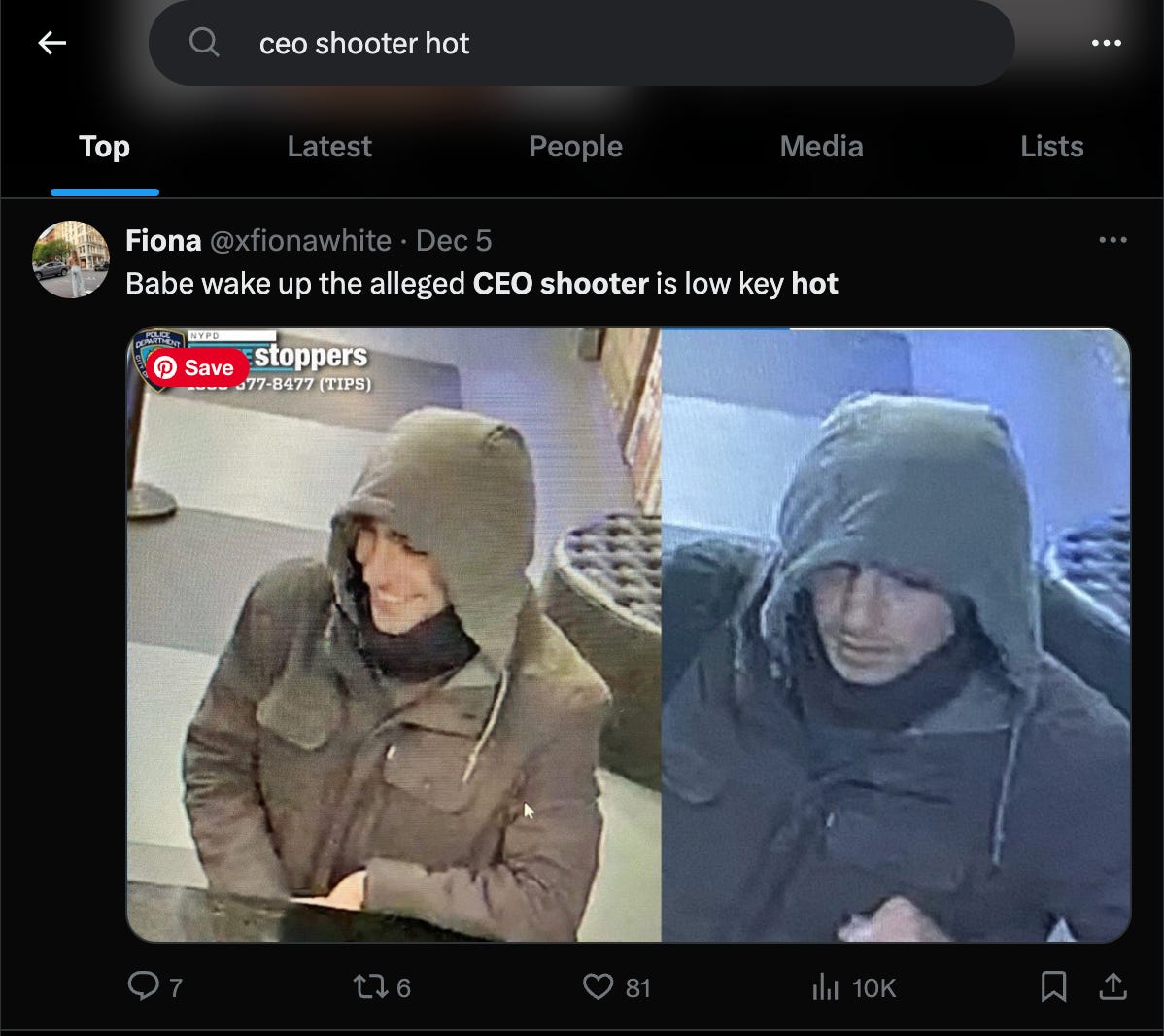




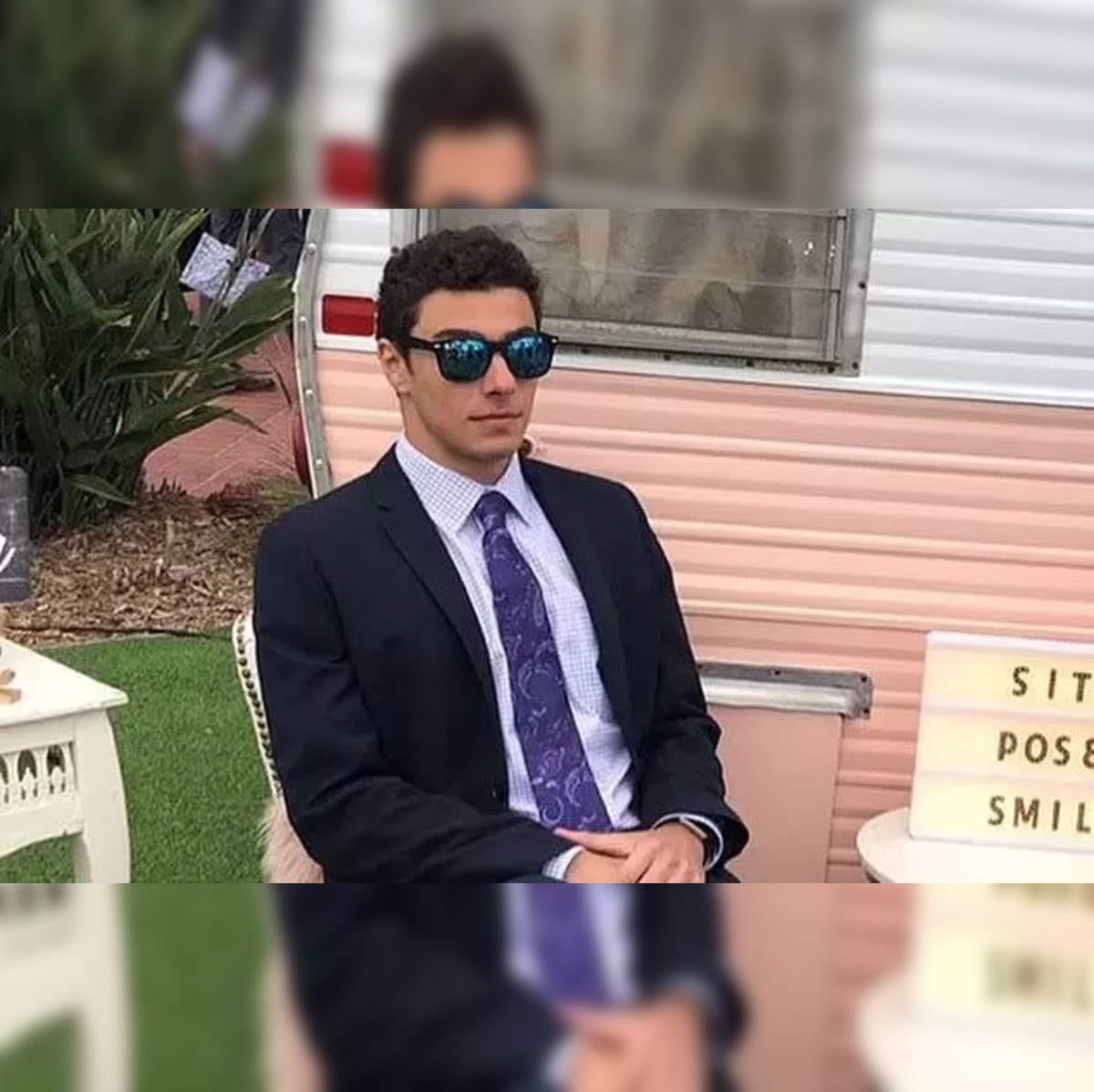

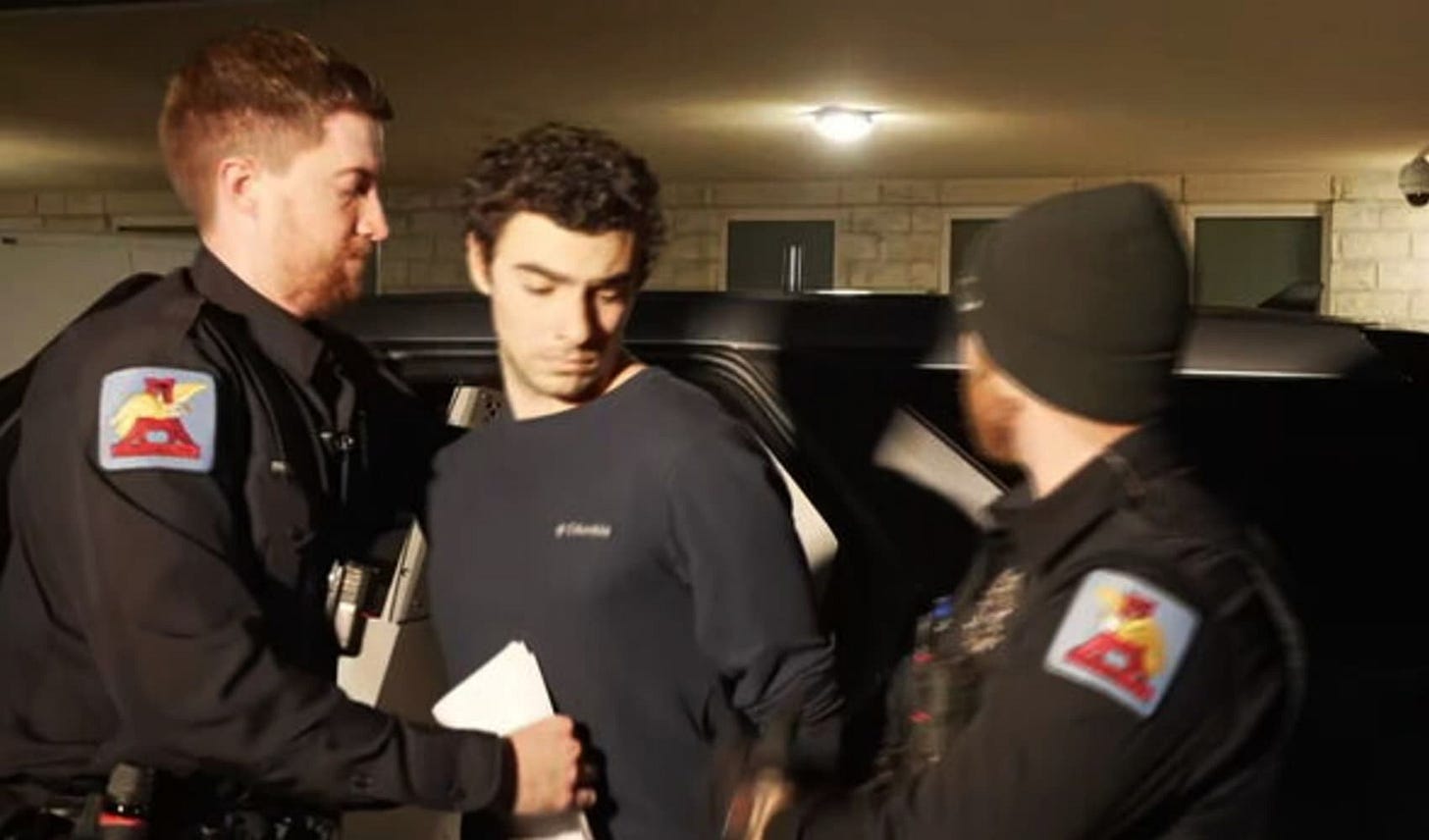


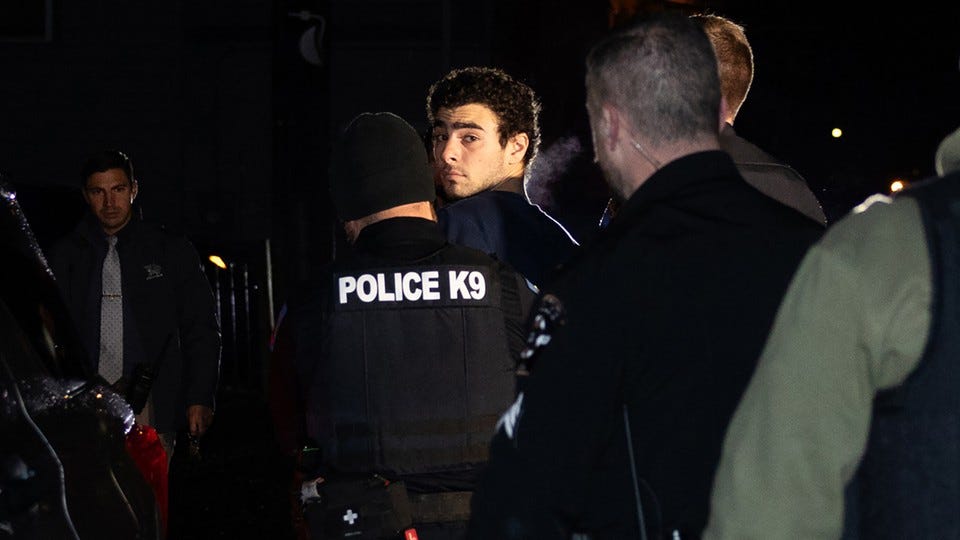
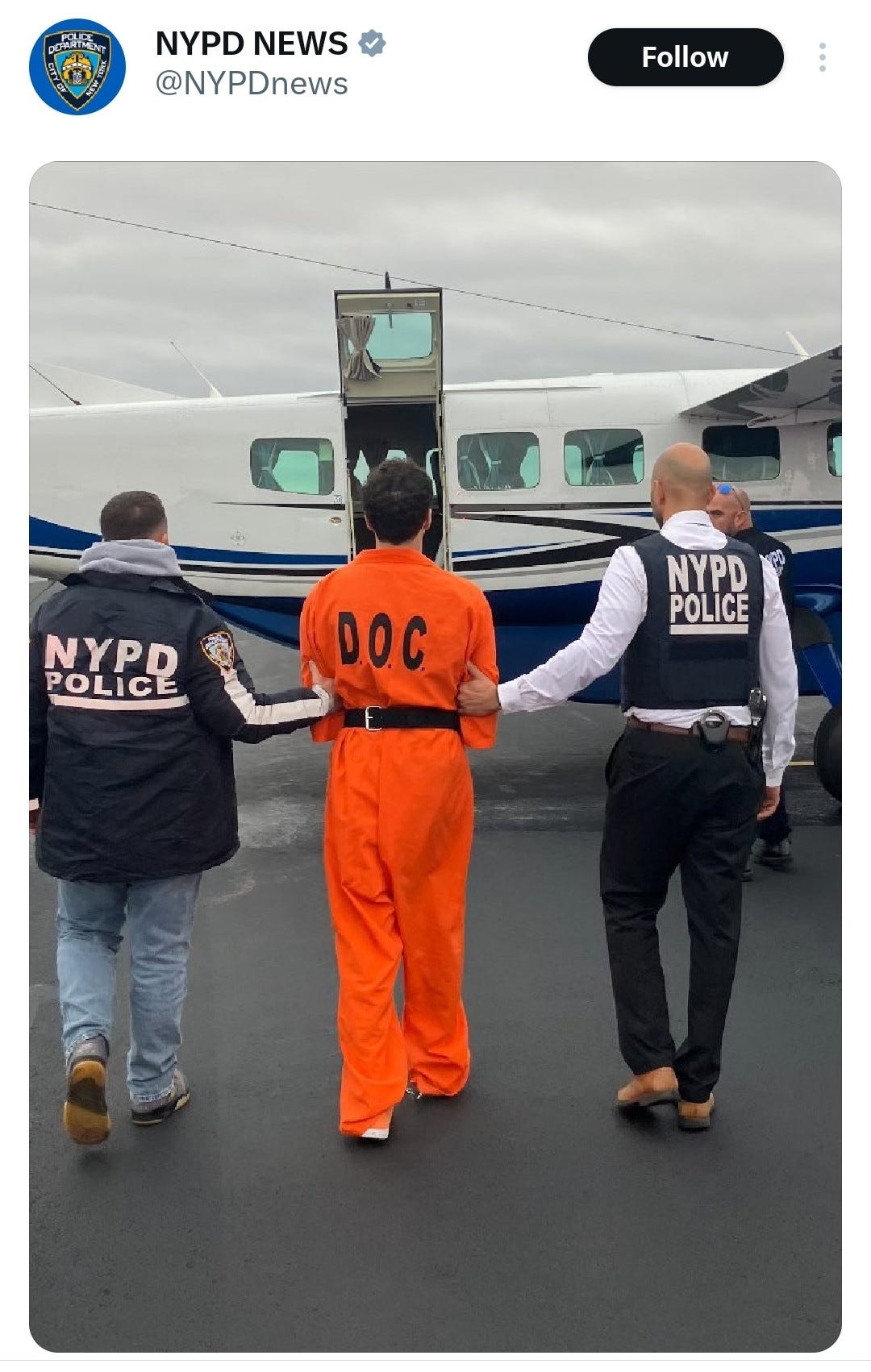
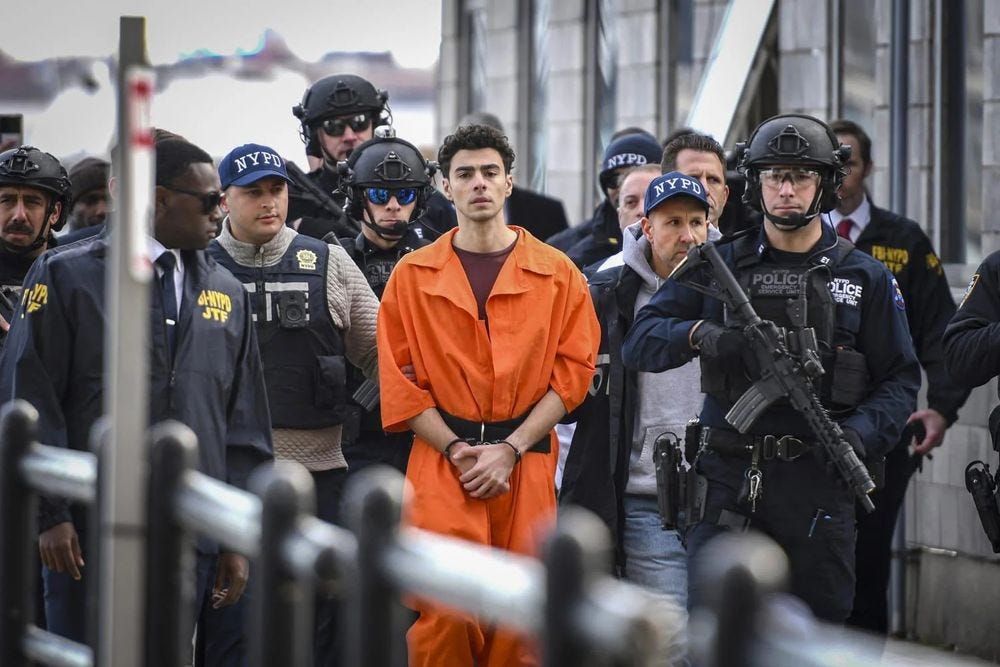
This is such a fantastic article. Loved this quote in particular: “But I do know the power of social media as a tool for change, and I wouldn’t count out its importance in this case—primary sources are primary sources.” I find it frustrating when people trivialize social media and its impact, and that’s only become heightened with the talk of the TikTok ban and hearing the dismissive attitudes from many who say things like “it’s not that serious, it’s just an app.” I’ve always recognized the importance of social media and its role in creating change and connecting us to events and people, but like Josie said, I never thought of social media serving as a primary source before, but it very much is! Such a great way of looking at it.
Brilliant essay. I'd love to see what you have to say about the formation of parasocial relationships (or the "ironic" ones---the distinction would be one between one's favourite celebrity vs. an internet figure they follow for "the memes") and how they influence the documentation of history.. How will journalists in the future tackle the hyperconnectivity among users and how that affects their relationships, both those that are real and those which are one-sided. I hope this made sense. Again, excellent essay!